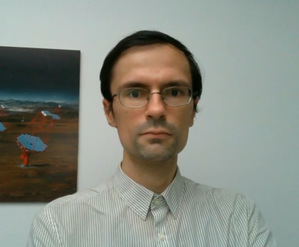Wed, July 10 2024, 3pm
Jiangwan C101
Astro Seminar: Particle acceleration to ultra-high energies at extra galactic jet termination shocks: Application to AGNs
Prof. Gwenael Giacinti (T. D. Lee Fellow at the Tsung-Dao Lee Institute & Tenure-track)
Abstract: AGN jets are some of the few astrophysical environments able to confine ultra-high-energy cosmic rays, but whether they are capable of accelerating these particles is unknown. In this work, we revisit particle acceleration at relativistic magnetized shocks beyond the local uniform field approximation, by considering the global transverse structure of the jet. Using large two-dimensional particle-in-cell simulations of a relativistic electron-ion plasma jet, we show that the termination shock forming at the interface with the ambient medium accelerates particles up to the confinement limit. The radial structure of the jet magnetic field leads to a relativistic velocity shear that excites a von Kármán vortex street in the downstream medium trailing behind an over-pressured bubble filled with cosmic rays. Particles are efficiently accelerated at each crossing of the shear flow boundary layers. These findings support the idea that extra galactic plasma jets may be capable of producing ultra-high-energy cosmic rays. This extreme particle acceleration mechanism may also apply to microquasar jets.
Bio: Gwenael Giacinti is a T. D. Lee Fellow at the Tsung-Dao Lee Institute, and a Tenure-track Associate Professor at Shanghai Jiao Tong University. Prior to that, he held postdoctoral researcher positions at the University of Oxford (United Kingdom) and at the Max Planck Institute for Nuclear Physics in Heidelberg (Germany), and earned his Ph.D. degree from Paris 7 University (France). He is interested in a number of topics in theoretical high-energy astrophysics and particle astrophysics, including cosmic-ray propagation, particle acceleration in pulsar wind nebulae, supernovae and supernova remnants, as well as gamma-ray astronomy. He is also interested in related plasma astrophysics problems, such as shock physics in the context of supernova shock breakout. He is the science working group coordinator of the Southern Wide field-of-view Gamma-ray Observatory (SWGO), and a member of the LHAASO Collaboration.supernovae and supernova remnants, as well as gamma-ray astronomy. He is also interested in related plasma astrophysics problems, such as shock physics in the context of supernova shock breakout. He is the science working group coordinator of the Southern Wide field-of-view Gamma-ray Observatory (SWGO), and a member of the LHAASO Collaboration

